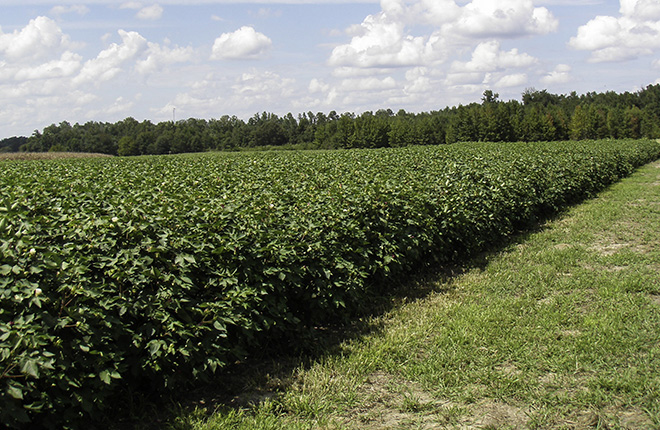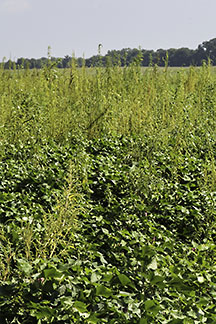Tillage Strategy Controls Palmer Amaranth Weed
An onslaught of the weed Palmer amaranth in the southeastern United States has left many farmers with a difficult choice: Should they keep using environmentally friendly cover crops and conservation tillage, allowing Palmer amaranth to cut into their yields, or should they switch to conventional tillage?
Conventional tillage may better control the pernicious weed, but it also increases soil erosion and threatens long-term soil productivity.
Palmer amaranth is aggressive and drought tolerant, a prolific seed producer, and resistant to glyphosate (an herbicide commercially known as "Roundup").
|
|
Because of that, thousands of acres in Alabama and elsewhere are at risk of being converted to conventional tillage, reversing years of environmental progress.
Agricultural Research Service (ARS) scientists at the agency's National Soil Dynamics Laboratory (NSDL) in Auburn, Alabama, are showing the region's cotton farmers how to control the weed and save their soil while still generating a profit. They can conventionally till weed-infested fields for 1 year and then use conservation tillage for at least the next 2 years.
Previous NSDL studies showed that the strategy effectively controls Palmer amaranth and produces sufficient yields. Recently, ARS economist Leah M. Duzy and her colleagues analyzed the financial implications of the weed-control strategy. "If we can show a financial benefit to a strategy, it's more likely to be adopted," says Duzy.
She calculated the net returns for cotton under different scenarios. For 3 years, she compared production costs and yields for two tillage systems: 1 year of conventional tillage followed by 2 years of conservation tillage; and 3 years of conservation tillage. There were also three different cover crops and three different herbicides applications (just before the cotton emerged, just after it emerged, and before and after emergence).
Results showed that in cotton fields infested with Palmer amaranth, there was a financial advantage to tilling during the first year because of the immense weed pressure. But in the second and third years, there was little difference in net returns. And with the higher costs of conventional tillage—having to make three passes with a plow versus not plowing at all—returning to conservation tillage made more sense financially.
Duzy estimates that a farmer could save around $26 per acre per year in the second and third years by switching back to conservation tillage. That would represent a $15,342 savings each year on a typical 600-acre Alabama cotton farm.
"We know that if a Palmer amaranth infestation is intense, conservation tillage alone may not be sufficient to control it during that first year. But if farmers decide to plow, then they should consider adopting a high-residue cover crop and immediately return to their conservation system in subsequent years. They don't have to plow the soil year after year," says Duzy. — By Dennis O'Brien, ARS Office of Communications.
Key Facts
- Palmer amaranth is an aggressive weed.
- ARS found that combining tillage methods helps control Palmer amaranth.
- The tillage strategy can save about $26 per acre.
Full Story









